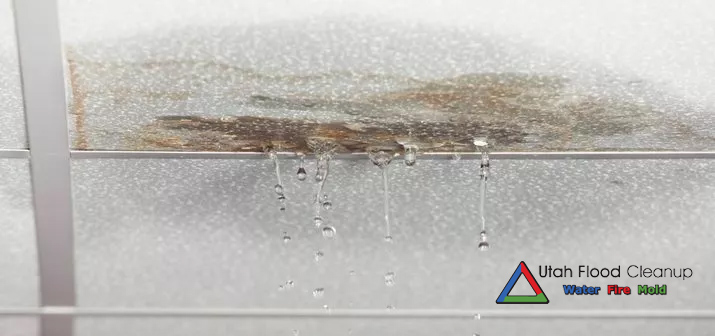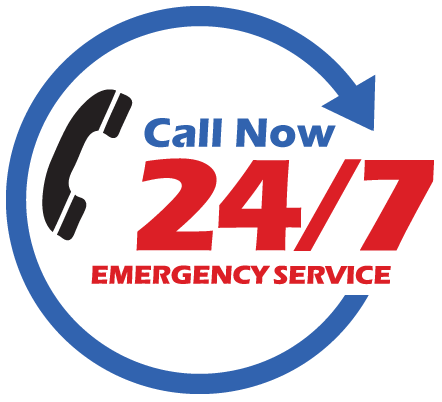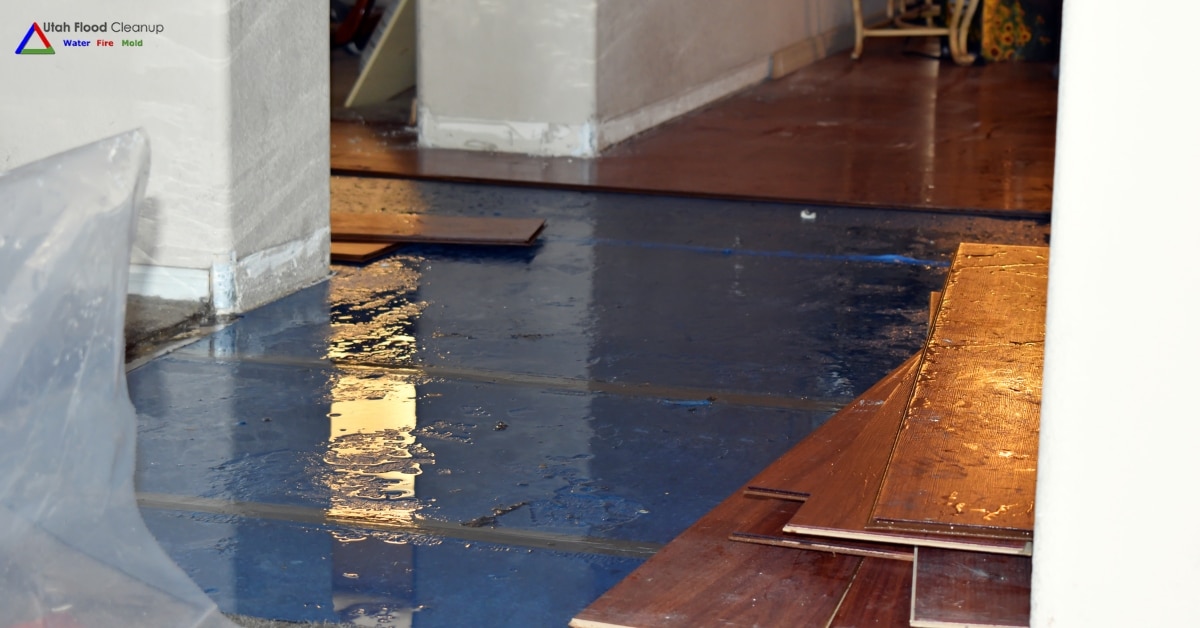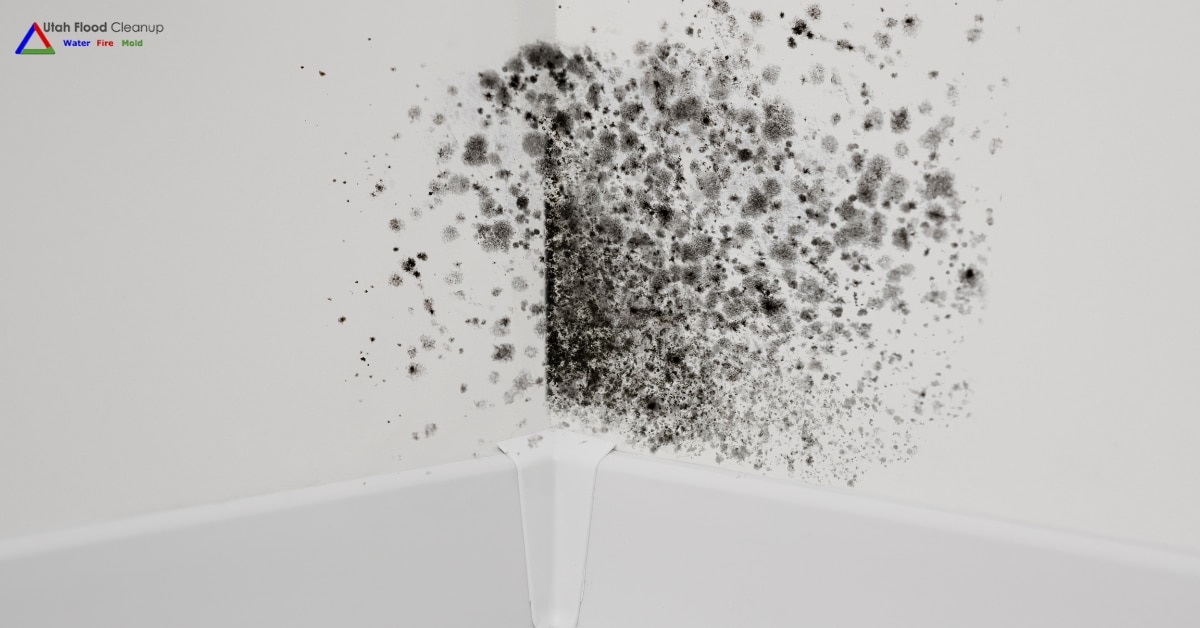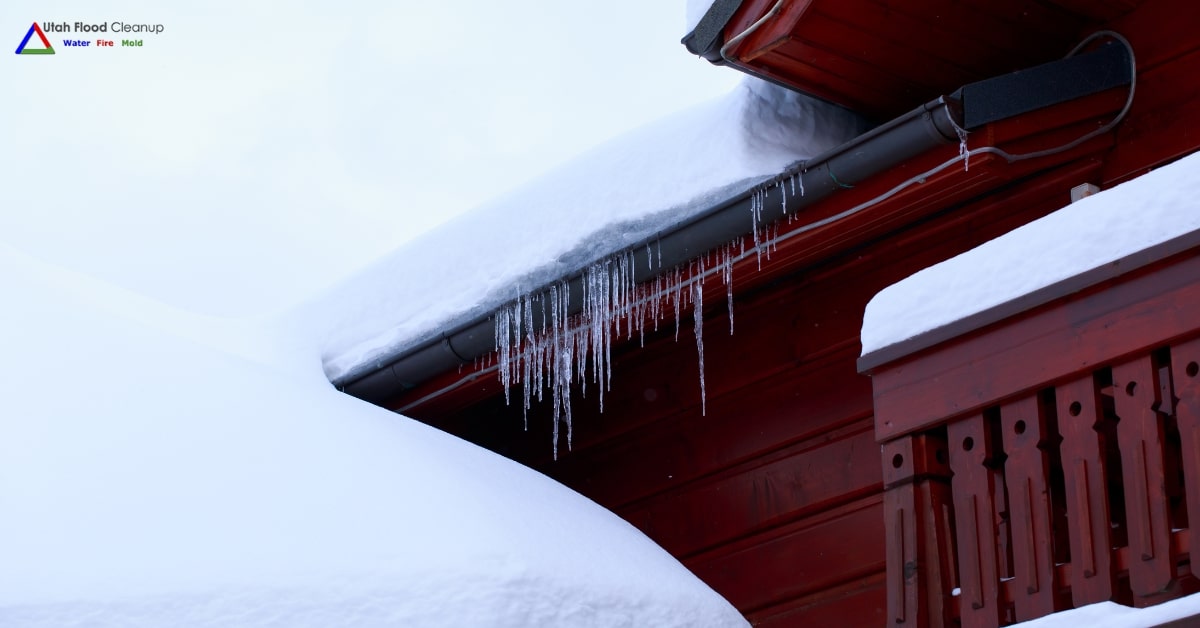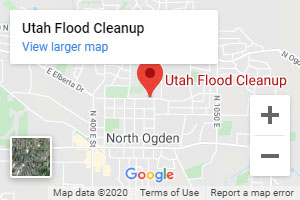Mold spores exist everywhere in our environment and having mold in your commercial building is a fairly common occurrence. However, it is important to recognize the symptoms of mold growth that may indicate you have a mold problem that needs to be addressed.
Table of Contents
You may think that since you do not see mold, there is no problem, unfortunately, high levels of mold can be present and can begin causing health issues before you discover evidence of its growth. That is why it is important that if you have symptoms of mold growth, you have them evaluated immediately to not only minimize the damage but protect your employees’ health as well.
How To Recognize The Signs Of Mold
Mold is an unsightly and potentially dangerous problem that can crop up in any home or business. To keep your property safe and clean, it's important to know how to recognize the signs of mold. Visible signs of mold include discoloration on walls, ceilings, or other surfaces; a musty smell; visible growths or patches; damp or water-damaged areas; peeling paint; and water stains. You should also be mindful of allergies, asthma attacks, and other breathing problems that arise unexpectedly. If you suspect mold is present on your property, contact a professional mold remediation company as soon as possible for an inspection and assessment.
It is always important to be on the lookout for possible signs of mold, as early detection is important.
Signs of a Mold Problem
A Strange Musty Odor
Mold growth is often hidden by wallpaper, tiles, or other flooring and therefore the smell may be your only way to identify it. Mold will have a very strong musty smell that is usually stronger around the area where mold is hiding. If you notice an odor and cannot identify the source it is possibly mold and you should call for an inspection.
Health Problems
Since mold is often hidden, your first signs may be health issued experienced by you and your employees. These type of symptoms are collectively known as sick building syndrome, which is where multiple people will experience a range of acute symptoms that appear to increase or begin when being in the building.
Symptoms Associated with Mold Problems
Sick building syndrome combined with a musty odor is typically a red flag that there is a mold problem present and should be investigated immediately.
- Dizziness
- Nausea
- Fatigue
- Increase in Allergy Symptoms
- Headaches
- Asthma Complications
Visible Mold or Mildew
It is important to be on the lookout for any visible mold or patches or mildew. While mold can occur anywhere in the building, there are common places that mold likes to hide.
Check your Building for Mold by Inspecting:
- Window Sills
- Ceiling Corners
- HVAC Drip Pans
- Wall Switch Plates
- Tile Grout
- Wall Paper Seams
- Anywhere There has Been Water Damage or Leaks
Checking for mildew can be a little more difficult as it has a lighter texture than mold. The texture of mildew is often white and powder-like on commercial buildings. If you notice any white powder on the floors or furniture it should be further inspected.
Water Stains
You will want to investigate any stains on carpets that seem to spread, dark spots on walls and ceiling tiles, and areas on wallpaper where there appears to be bubbling present. Most often mold is associated with consistent water damage that often occurs from roof leaks or leaking pipes. If you have any of these problems in your building they should be repaired and the water damage should be professionally cleaned to prevent the growth of mold.
If your building has had a flood or severe water damage in the past you should notify your inspector as this may help the to determine the root of the mold problem more quickly.
FAQs
What are common signs of mold growth?
Mold growth is a serious concern for homeowners, as it can pose health risks and cause property damage if left untreated. To recognize the signs of mold, keep an eye out for visible mold on surfaces like walls and furniture, a musty odor, water damage or leaks, allergic reactions, and excessive condensation. Being aware of these signs can help you take prompt action to address mold growth and protect your home and family.
How can I tell if there is mold in my home?
As a responsible father, ensuring a safe and healthy environment for your family is crucial. In this blog post, we will outline key indicators to help you identify mold in your home. Look for visible mold in various colors on surfaces like walls, ceilings, and floors, paying close attention to moisture-prone areas. Mold often emits a distinctive musty odor, particularly in enclosed or damp spaces. Additionally, be vigilant for signs of water damage, such as discoloration or peeling paint. By recognizing these indicators early on, you can take prompt action to protect your loved ones from potential health risks associated with mold.
What are the early warning signs of mold?
As a concerned father, your family's safety is a top priority. Mold growth can pose serious health risks, especially for children. Identifying early warning signs of mold is crucial for prompt action and seeking legal assistance if needed. In this article, we will explore common indicators of mold presence, such as musty odors, visible mold growth, and water leaks or moisture intrusion. By being vigilant and taking action, you can protect your loved ones from potential health hazards associated with mold.
What are the symptoms of mold exposure?
When it comes to your family's health, being vigilant as a father is crucial. Mold exposure can have serious consequences, so recognizing the symptoms is essential for taking action and seeking legal assistance if needed. In this blog post, we will explore the symptoms of mold exposure, including respiratory issues like coughing and wheezing, allergic reactions such as sneezing and itchy eyes, and nasal and sinus congestion. By understanding these symptoms, you can better protect your family from the potential health risks associated with mold.
How do I know if I have a mold problem?
As a father, ensuring the well-being of your family is paramount. Mold in your home can pose health risks, so early identification is crucial. In this blog post, we will guide you in recognizing potential mold issues, allowing you to seek legal assistance if needed. Look for visible signs of mold growth, such as discoloration or unusual patches on walls, ceilings, floors, or even furniture. Pay attention to musty odors in specific areas, as well as any unexplained health symptoms like nasal congestion, skin irritation, or fatigue. It's also important to check for any water damage or leaks, as these can create a breeding ground for mold growth. By being proactive and addressing any potential mold issues promptly, you can protect your loved ones from the potential hazards of mold exposure.
What are the symptoms of mold allergies?
As a father, your child's health is a top priority. It's important to be aware of common health issues, such as mold allergies, that can affect their well-being. In this blog post, we will explore the symptoms of mold allergies, empowering you to recognize and address potential mold-related health concerns.
Understanding Mold Allergies:
Mold allergies occur when individuals have an allergic reaction to mold spores in the environment. Mold thrives in damp areas like basements, bathrooms, and kitchens. Inhaling or coming into contact with mold spores can trigger respiratory issues like sneezing, a runny or stuffy nose, itchy or watery eyes, and persistent coughing. It can also cause skin irritation, such as a rash or hives, along with inflammation and itchiness. By being aware of these symptoms, you can take appropriate measures to protect your child's health from potential mold-related allergies.
How do I identify visible mold growth?
As a father seeking legal assistance in establishing paternity, it's important to be well-informed about all aspects of the process. Identifying visible mold growth is crucial for the health and well-being of your family. In this blog post, we will guide you through the process of identifying visible mold growth, equipping you with the knowledge to make informed decisions and protect your loved ones. Look for signs such as discoloration, fuzzy or slimy texture, irregular patterns, and a musty odor. By being vigilant, you can address mold growth and ensure a safe environment for your family.
What are the indications of mold in a house?
Mold in a house can have serious health implications if not addressed. Identifying the signs of mold is crucial for maintaining a safe living environment. Look out for visible mold growth, a musty odor, water damage, allergic reactions, and respiratory problems. Visible patches or clusters of mold, a distinct musty smell, past or current water damage, persistent allergic reactions, and unexplained respiratory issues can all indicate the presence of mold. By recognizing these signs, you can take appropriate action to address mold and ensure the well-being of your family.
How can I check for mold in my house?
As a concerned father, ensuring a safe and healthy living environment for your family is crucial. Mold, a common household issue, can pose health risks if left unaddressed. In this blog post, we will guide you through the process of checking for mold in your house. Look out for signs like musty odors, visible discoloration on walls, ceilings, or other surfaces, water leaks or stains, allergic reactions, and mold-related health issues. Conduct a thorough visual inspection of moisture-prone areas, including those near plumbing fixtures or cabinetry. Mold growth can also affect the quality of the air you breathe, potentially leading to symptoms like fatigue or respiratory issues. It's important to address any mold concerns promptly, as mold can not only damage your property but also impact the taste and smell of food and clothing. By taking these steps, you can ensure a safe and healthy living environment for your family.
Facts about Recognize the Signs of Mold in a Building
- Common signs of mold in a building include visible mold growth on surfaces such as walls, ceilings, floors, or furniture.
- Mold growth in a building can pose health risks and cause property damage if left untreated.
- Mold can appear in various colors, including black, green, white, or gray.
- A musty or earthy odor is often associated with mold growth.
- Areas with water damage or leaks are more susceptible to mold growth.
- Pay attention to signs of water damage, such as discoloration, peeling paint, or warped surfaces.
- Mold spores can trigger allergic reactions in some individuals, leading to symptoms like sneezing, coughing, itchy eyes, or respiratory issues.
- Excessive condensation on windows, pipes, or other surfaces can indicate a moisture problem and potential mold growth.
- It is important to address mold issues promptly to protect the health of occupants and prevent further damage to the building.
Get a Quote From a Mold Remediation Specialist in SLC, UT.
While mold may be very dangerous to your building and your health, proper steps can be taken to clean up the mold and make your workplace healthy for you and your employees to return.
If you See Mold in the Workplace, Contact Utah Flood Cleanup to Schedule a Free Inspection for Water Damage Incidents Covered by Insurance!
Steps Involved in Mold Remediation:
- Visual inspection to check for any dampness on walls, floors, or ceilings
- Laboratory testing of mold samples and air quality check
- Mold type determination
- Removal of mold contaminated items
- Disinfection of the area
- Final inspection
Mold remediation is a detailed process that requires careful planning and execution. The first step is to identify the source of any mold infestation. This can include checking for leaky pipes, condensation, or other sources of water intrusion. Next, all affected materials including carpets, furniture, and drywall should be removed and discarded properly. After all contaminated materials have been removed, the next step is to clean all surfaces with an effective antimicrobial solution in order to kill existing mold spores. Finally, any remaining mold must be dehumidified and monitored until a safe humidity level has been reached. By following these steps, our customers can rest assured that their homes are free from mold infestations and can enjoy a healthy indoor environment.
Need Commercial Mold Remediation Services Near Salt Lake City? Call Utah Flood Cleanup for a Free Quote!
Latest posts by Utah Flood Cleanup (see all)
- What are the Benefits of Professional Water Damage Repair in Utah? - April 16, 2024
- Dealing with Winter Mold: Who to Call for Black Mold Removal in Utah - March 29, 2024
- Post-Snowmelt Water Damage Restorations: What Utah Residents Need to Know - March 28, 2024
